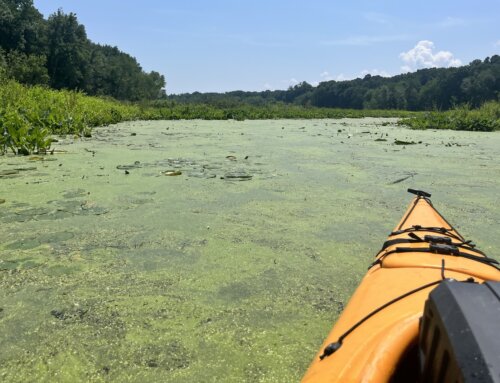July 21, 2021
| Doug MacLean
U.S. Environmental Protection Agency – Region 1 5 Post Office Square, Suite 100 (06-4) Boston MA 02109-3912 |
Claire Golden
MassDEP, Surface Water Permitting Program 205 B Lowell Street Wilmington, MA 01887 |
| Submitted via email: maclean.douglas@epa.gov | Submitted via email: massdep.npdes@mass.gov |
Subject: Erving POTW #1
Permit Number: MA0101516, Public Notice MA-18-21
Erving POTW #2
Permit Number MA0101052, Public Notice MA-19-21
Dear Mr. MacLean and Ms. Golden,
I am submitting comments on the revised draft National Pollutant Discharge Elimination System (NPDES) permits for two facilities, Erving POTW #1 and Erving POTW #2, on behalf of the Connecticut River Conservancy (CRC), formerly the Connecticut River Watershed Council. Both facilities discharge into the Millers River, which is a tributary to the Connecticut River.
Comments specific to Erving POTW #1.
Nitrogen Requirements. CRC supports EPA’s approach to setting nitrogen loading limits. This facility is processing significantly less water than its design flow of 1.02 MGD; the Fact Sheet states that the average flow has been 0.123 MGD. The nitrogen limit based on the design flow and a concentration of 10 mg/L is therefore quite high compared to what this facility is discharging. While we understand lowering a flow limit may impact any future growth plans, CRC wonders if there might be value in changing the flow limit which would have the effect of lowering the TN limit.
The draft permit at section G2 appears to have a couple of lines of text missing, such that the first sentence is hanging and makes no sense with the next set of text.
The draft permit in section G3 requires a study to demonstrate the pH in the receiving water does not exceed the range of 6.5-8.3. The Fact Sheet does not state the rationale for this study and a similar study is not required for POTW #2. Since there have been no violations from the facility, it’s not clear why this study is required.
The Fact Sheet at page 13 states incorrectly that the Connecticut River discharges to Long Island Sound at New London, CT. The correct location is given in the Fact Sheet for POTW #2.
Comments specific to Erving POTW #2.
Nitrogen Requirements. The draft permit sets a new average monthly limit of 225 lb/day for total nitrogen. This limit is based on the design flow of 2.7 MGD and a nitrogen concentration limit of 10 mg/L for facilities between the size of 1 and 5 MGD. The facility is also required under Part G(2) to submit a report by February 1 each year that summarizes nitrogen discharges and efforts to optimize nitrogen reductions. The Fact Sheet notes that the average TN monthly average has been 30.6 lbs/day, which is an order of magnitude less than the proposed limit. The Fact Sheet at Section 3.1 notes that 95% of the influent to this treatment facility comes from Erving Industries, a paper plant. While CRC is supportive of the basis for which EPA has developed nitrogen loading limits in Massachusetts, perhaps the nitrogen concentration limit should be adjusted for this mostly-industrial facility. For example, Appendix A shows the recent TN loading values, and the highest monthly average has been 83 lbs/day. Why not determine an appropriate concentration based on the industry type (pulp and paper), rather than using the 10 mg/L concentration that is geared towards a POTW?
CRC requests that EPA develop a way for the public to access annual reports submitted by NPDES permit holders without having to file a FOIA request, similar to the system available for reviewing annual NPDES MS4 compliance reports for each community. If these reports are already available via the ECHO system or some other system, please let me know.
Ambient Phosphorus Monitoring. Section G(1) of the draft permit requires monthly samples from April through October collected at a location upstream of the facility, during odd numbered years only, and tested for total phosphorus. CRC notes that a Quality Assurance Project Plan is required. Since both facilities have a phosphorus testing requirement (missing text in the other draft permit makes it unclear what the requirement is), it would make sense to create a single QAPP. CRC recommends that EPA and DEP require that the data be uploaded into the Water Quality Exchange (WQX) system so that the public and DEP have easy access to this data for use in the Integrated List and for scientific inquiry (retrieval through ECHO is cumbersome and difficult for non-discharge data like this).
Comments pertinent to both permits.
CRC supports the increased frequency of effluent nitrogen testing from monthly to weekly.
PFAS requirements. CRC supports the efforts of EPA and DEP to characterize PFAS inputs to river systems. We support the quarterly influent, effluent, and sludge testing requirement shown in Part I(A)1, as well as the annual industrial discharge testing outlined in Section E(7). The Millers River seems to have higher PFAS levels than the Deerfield or Chicopee Rivers in testing recently presented by MassDEP and the U.S. Geological Survey – see https://www.mass.gov/doc/pfas-in-massachusetts-rivers-presentation/download. Understanding the inputs is very important to tackle this emerging contaminant. We understand that these facilities are not designed to treat persistent chemicals such as PFAS.
CRC appreciates the opportunity to provide comments on the draft permits. I can be reached at adonlon@ctriver.org or (413) 772-2020 x.205.
Sincerely,
Andrea F. Donlon
River Steward
Cc: Ivan Ussach, Millers River Watershed Council
Erving Select Board







